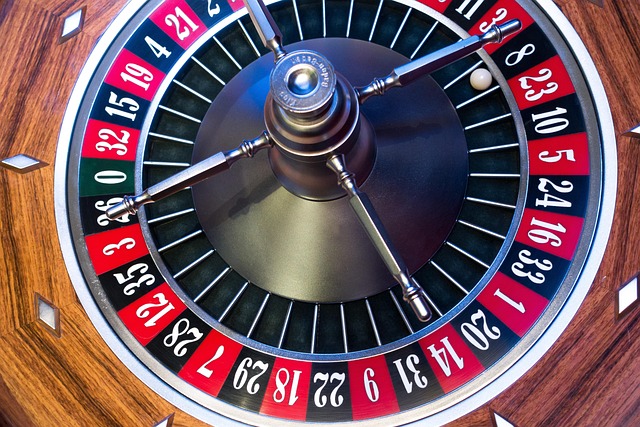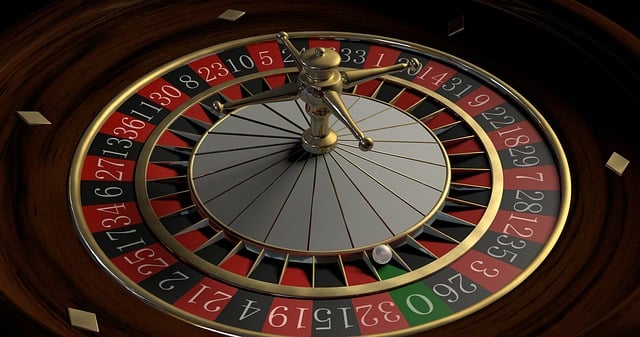European and American Roulette offer distinct gaming experiences with variations in layout, betting options, and house edge. European roulette features a simpler design with 37 numbers, lower odds, and a 2.7% house edge, while American roulette has 38 pockets including a double zero, higher odds (3.6%), and unique 'Call' and 'Split' bets. Both share core strategy elements, allowing players to choose based on preferred risk profiles and game atmosphere.
Roulette is a captivating casino game with numerous variations, each offering a unique twist on the classic spin. This article explores diverse roulette types, from European and American versions to the enigmatic French Roulette and its historical roots. We delve into alternative forms like Live Dealer and Multi-Wheel, analyzing betting options, house edges, and player preferences in this ever-evolving digital age. Discover the rich tapestry of roulette variations that cater to every gusto and skill level.
- European Roulette vs American Roulette
- – Key differences between the two variations
- – Betting options and house edge analysis
European Roulette vs American Roulette

European and American Roulette are two popular variations of the classic game, offering subtle yet distinct differences that cater to various player preferences. In European Roulette, the wheel features 37 pockets, numbered from 0 to 36, with an equal distribution of red and black sectors. This version is renowned for its lower house edge, typically around 2.7%, making it a favourite among players who prioritise optimal odds. The gameplay follows a strict set of rules, ensuring fairness and consistency.
In contrast, American Roulette increases the wheel’s pockets to 38, with an extra green pocket for the zero. This addition boosts the house edge, resulting in slightly higher risks but also potentially larger payouts. American Roulette is known for its fast-paced, vibrant atmosphere, often attracting a different crowd due to its more exciting yet somewhat unpredictable nature. Despite the differences, both versions share the core elements of strategy and excitement that have made roulette one of the most captivating table games worldwide.
– Key differences between the two variations

European and American roulette are two popular variations of the classic game, each with distinct characteristics. The key difference lies in the layout and one specific bet type. European roulette features a simpler design with 37 numbers (0-36) on a single zero wheel. This version is known for its lower house edge, making it more favorable for players. In contrast, American roulette has an additional double zero (00), bringing the total number of pockets to 38. The introduction of this extra pocket increases the house advantage, making American roulette slightly less advantageous for bettors.
Another notable variation is the betting options and rules. European roulette offers a more extensive range of bets, including straight-up, split, street, and corner bets. Players can also employ strategic bet placement to reduce risks. In contrast, American roulette has some unique bet types like the ‘Call’ and ‘Split’ bets, which cater to specific number combinations. The rules may differ slightly in terms of game flow and payouts, adding a layer of complexity for players familiar with European roulette.
– Betting options and house edge analysis

Roulette offers a wide range of betting options, from simple bets on individual numbers to more complex wagers on groups of numbers, colors (red or black), and even odd/even. Each bet has its own risk profile and potential payoff, allowing players to choose strategies that align with their comfort levels. Understanding the house edge is crucial in roulette; it varies based on the type of bet. Straight bets on individual numbers have a 1:36 (or 4.3% house edge) advantage for the casino, while more common bets like “red/black” or “even/odd” offer slightly lower edges around 2-3%. Bet on columns or groups of 6 numbers see the house retain around 5%, providing players with varied risk and reward dynamics to choose from.
Analyzing the house edge is key for strategic roulette play, as it directly impacts your long-term chances of winning. By considering the betting options and their respective edges, players can make more informed decisions, potentially increasing their odds against the casino. This analysis encourages a nuanced approach to roulette, moving beyond sheer luck and into the realm of calculated risk.
Roulette, a timeless casino classic, offers various exciting iterations. Understanding the nuances of European and American Roulette is key for any enthusiast. While both provide thrilling spinning action, their distinct features—from betting options to house edge—make each variation appealing in its own right. Whether you prefer the simplicity of European or the added excitement of American, knowing these differences ensures a more informed and enjoyable gaming experience.






